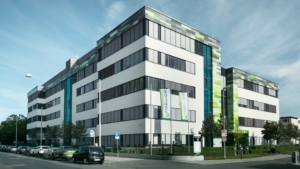
New antibiotics on the block
Around 300 international AMR experts met at ESCMID-ASM drug development conference in Lisbon to discuss the latest progress in the field.
For developers of antimicrobial resistance breakers, the meeting organized by the European Society of Clinical Microbiology and Infectious Diseases (ESCMID) and the American Society of Microbiology (ASM) is a must-be. The 4-day-programme (4th to 7th September 2018) in Lisbon covered more than 60 speakers and multiple AMR-related topics, ranging from chemical chemistry questions and pharmacogenetics, to the role of rapid diagnostics up to regulatory challenges of innovative therapeutic approaches and clinical trial designs.
Multiple obstacles along the clinical road
A range of companies and researchers reported on their experiences with innovative approaches such as combinational strategies (Spero Therapeutics), bacterial growth rate modulators (Institute for Clinical Pharmacodynamics) or monoclonal antibodies (Arsanis) and phages (Nestlé research centre) as potential new approaches to fight antimicrobial resistance (AMR). According to the experts, most of the hurdles in AMR drug development relate to challenges during clinical development. Though reporting clinical success and reaching market approvals, late-stage companies presenting in Lisbon – Tetraphase, Paretek Pharmaceuticals, Motif Bio and Nabriva, etc, – said it was a rocky road to success.
For instance, Judith Steenbergen, Vice President Medical Strategy of Paretek, remembered that the first clinical trial already started back a decade ago, in 2005. From the very beginning until today, we needed 27 different trials with more than 2,000 patients to receive market approval for our new oral antibiotic Omadacycline for use as a monotherapy antibiotic against acute bacterial skin and skin structure infections, she said and added: All this came along with costs of US$300m. She said, different global standards of care are a major hurdle for trial site selection and patient recruiting. Our situation in the US was: we asked more than 600 sites, finally ended up with about 20 having the requested conditions and with 12 who wanted to take part. However, we finally could include only three patients in the trial. Selecting the right competitor drug with a comparable dosing scheme at different sites across the globe is another challenging issue, she and others reported in Lisbon.
Need for harmonisation at regulatory level
Many experts expect that new clinical trial designs such as adaptive trials or platform trials will help companies in the AMR field to conduct trials more efficiently and at a lower cost in the future. An analysis from the STAT net project funded by the European COMBACTE consortium, presented at the conference, supported this thesis. Representatives from the European Medicines Agency, the US-Food & Drug Administration (FDA) and the Japanese Pharmaceuticals and Medical Devices Agency (PMDA) underlined their willingness to support AMR drug developers with a harmonization of rules in the future. For this, a tripartite dialogue has been started, with meetings focusing on antibacterial agents and joint workshops. Both, Marco Cavaleri (EMA) and Edward Cox (FDA), confirmed the growing role and high value of clinical trial networks to facilitate the evaluation of new antibacterial agents. In addition, the importance of public-private collaboration in the field of global AMR surveillance was highlighted at the conference . How industrial data could be implemented within an open platform, was demonstrated in a report released by the Wellcome Trust-funded AMR Open Data Initiative. The project was started in early 2018 to bring together pharmaceutical industry, public health organizations and other AMR initiatives with the aim of establishing a more informative, coherent and openly accessible AMR data landscape.
Demand for pull incentives
Discussions in Lisbon also focused on financial issues and the uncertain economic market perspective for companies in the field. Steven Galone, Chief Operating Officer of Austrian Nabriva, underlined: We had to go public on US-Nasdaq to finance our Phase III clinical trials. Now, with Lefamulin close to market, payers need to pay for it, and everyone is waiting for success. Galone and many others urged policy makers and regulators to rapidly established pull incentives to give patients access to more new antibiotics. We have to stop talking and talking, what we need is a joint action. Otherwise, most of the small innovators will end up struggling to finance their business, told Marc Gitzinger European Biotechnology.
The CEO of Swiss Bioversys is a board member of the BEAM Alliance which represents small and medium-sized companies working on new antimicrobials. Financial challenges and promising incentives from the policy sector will also be a major topic at the Berlin Conference Novel Antimicrobials and AMR Diagnostics which will take place in March 2019.


 BioNTech SE
BioNTech SE
 Qureight Ltd
Qureight Ltd